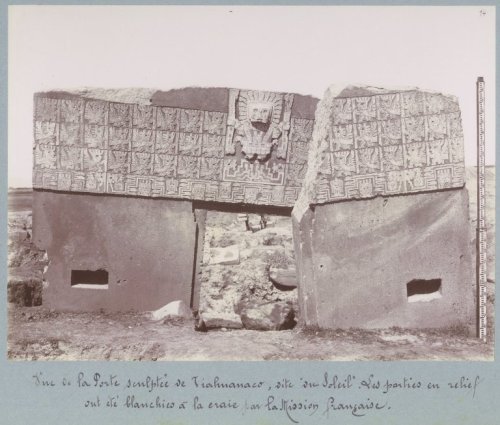Temples, tombs and statues seem eternal—but over the centuries, ancient architecture undergoes
Temples, tombs and statues seem eternal—but over the centuries, ancient architecture undergoes constant change. Structures are buried and then uncovered, torn apart by tourists and thieves, and altered with random carvings and graffiti by curious and careless travelers.The multi-volume Travellers’ graffiti from Egypt and the Sudan housed in the Brooklyn Museum Library documents an era when the Egyptian pyramids were popular sites for graffiti and vandalism. Then, and for centuries before, ancient ruins and sacred sites were not yet set apart and untouchable, but part of the everyday built environment.The weight of history gives buildings power and the physical remains of the past cast a strong spell – but what if a ruin lacks the dimension of time?The FAILE Temple, now on view, is a contemporary creation made to resemble an ancient religious ruin. The artists were inspired by both sacred architecture and street culture. The temple form may be familiar, but the structure is adorned with an abundance of unexpected popular-culture imagery, religious iconography and advertising art.Temporary and contemporary, the FAILE temple creates a dramatic field of tensional forces in space rather than through time. FAILE blurs boundaries between high and low, past and present and between the spiritual and the everyday. The installation is a reminder that a ruin is a living thing.Read more by and about the FAILE collective, artists Patrick McNeil and Patrick Miller, at #bkmlibrary.Posted by Roberta Munoz -- source link
Tumblr Blog : brooklynmuseum.tumblr.com
#brooklyn museum#bkmlibrary#brooklyn#faile#faileart#temple#library#archives#libraries#art#artists#tombs#statues#architecture#rourists#thieves#graffiti#carvings#vandalism#ancient#ruins#sacred#environment#contemporary art#structure#pop culture#religious#iconography#advertising#highlight





